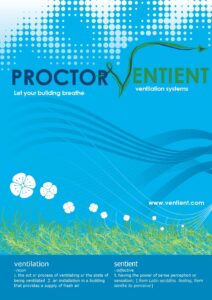Buildings are for people
Indoor Environmental Quality (IEQ)
With the focus on the environmental and economical sustainability of new buildings, it can be easy to forget that most buildings exist to provide a safe and comfortable environment for people to live and work in.
Business operational costs and ongoing maintenance expenses are being given a greater degree of consideration at design stage, rather than focusing purely on initial construction costs. It is well known that in a typical office building, the cost of the employees or “human capital” far outweighs that of the “building capital”. Research from BOSTI shows that people costs were far greater than office costs, in a ratio of 13 to 1 for newly built offices.
Smart design, planning and management of the interior environment has substantial implications for the community in terms of health and social well-being and for organisations in economic terms, such as higher job satisfaction, higher employee productivity and team performance, plus lower staff turnover.
Just as there are benefits in an appropriately designed building, there are negative costs for a poorly designed one. The adoption of effective natural or passive ventilation systems can reduce running costs and carbon emissions and drive major improvements in IEQ.
Ventient can help reduce indoor carbon dioxide concentrations.
Improved Indoor Air Quality
Ventient allows for the intake of outside air with additional filtering of up to 68% of typical airborne dust (ASHRAE 52.1 1992). Well designed continuous background ventilation can provide more consistent levels of good air quality compared with occasional purge ventilation.
Improved Thermal Comfort
By passively changing the size of the ventilation intake in relation to ambient temperature, Ventient overcomes one key problem with operable windows and standard trickle vents – that users tend to close the vents and forget to reopen them.
Improved Indoor Air Quality
Ventient allows for the intake of outside air with additional filtering of up to 68% of typical airborne dust (ASHRAE 52.1 1992). Well designed continuous background ventilation can provide more consistent levels of good air quality compared with occasional purge ventilation.
Trickle (Passive) Ventilation
Passive ventilation has become regarded by many architects as a socially responsible alternative to mechanical ventilation in today’s green buildings.
Trickle or passive ventilation is considered a low cost solution, whilst providing an optimum level of thermal comfort and a healthier indoor environment by the use of a sustainable, natural resource… air!
There have been many published studies which show that the human thermal sensation index in a natural ventilated environment is more receptive than that of a mechanically ventilated environment.
By controlling air movement through passive ventilation, many risks associated with a poorly maintained HVAC system such as occupant health, upper and lower respiratory ailments, eye and skin irritations, headaches and fatigue can be alleviated.
In buildings with few or no operable windows, the inclusion of Ventient can improve indoor air quality. With an effective filter, up to 68% of typical airborne dust can be collected. The reduction in harmful micro-biologic exposure has both public health and economic benefits, with a decreased prevalence of sick building syndrome symptoms and the increased productivity and well being of occupants.



